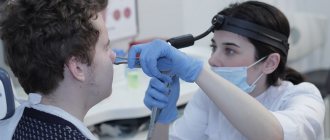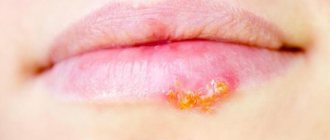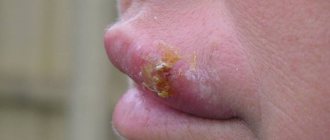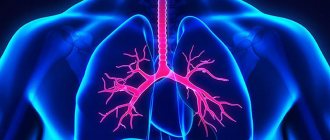Erosive bulbitis is a fairly serious pathology, which is characterized by inflammation of the duodenum. This disease is not very common, but can lead to negative health consequences. Therefore, the first signs of pathology should be a reason to visit a doctor. This disease is detected in 1-3% of people who have undergone gastroscopy due to pain in the upper abdomen.
What is erosive bulbite
The essence of the disease lies in the inflammatory process of the duodenal bulb. This section of the gastrointestinal tract borders the stomach. In addition, the pathological effect is not only on the duodenum, but also on the bile ducts. The disease manifests itself in acute or chronic form. The main symptom of erosive bulbitis is damage to the mucous membrane by bleeding erosions.
As a result of the disease, the acidity of gastric juice increases. Chronic gastritis and Helicobacter pylori infection can also provoke this phenomenon.
The normal digestive process involves alkalization of the resulting food in the duodenum bulb. Then, in this section, the bolus of food is mixed with enzymes and bile, after which it is sent to the intestines.
With dysfunction of this department, the high level of acidity of gastric juice is not neutralized. As a result, the walls of the duodenum begin to become inflamed. The clinical picture is complicated by stagnation of food. The first stage of the disease is defined as superficial bulbitis. If ulcers on the mucous membrane are diagnosed - erosive bulbitis (the next stage).
Pathogenesis
The main “culprit” of bulbitis is the bacterium Helicobacter pylori. During infection, the intestinal mucosa is destroyed under the influence of aggressive waste products of the pathogen. Helicobacter pylori infection causes acute bulbitis. Treatment must be started immediately to avoid internal bleeding. Helicobacter is transmitted from an infected person or animal (cats, some species of monkeys). Transmitted through kissing, fecal-oral, and waterborne routes. Chlorination of water will not prevent infection, since Helicobacter pylori, turning into a coccal form, retains its viability.
The second key link that provokes bulbitis is a violation of peristalsis (contraction of the walls to move their contents) of the intestines. Stagnant food with digestive enzymes eats away the mucous membranes, which causes inflammation.
Not the least role is played by the stress factor, since emotional shocks and nervous strain predispose to almost all diseases. Stress causes vasospasm, which disrupts microcirculation (blood flow in small vessels). Thus, constant stress leads to ischemia (reduced blood supply) of the intestinal wall, which threatens further tissue damage.
Parasitic infestations (helminthiasis, giardiasis) can also cause harm. Parasites, feeding on beneficial substances from digested food intended for the body, negatively affect the intestines. Due to a lack of vitamins, the immune system weakens and resistance to diseases decreases. Parasitic worms such as necator and hookworm feed on blood and tissue.
Due to poor nutrition and alcohol abuse, moderate bulbitis appears. Symptoms resemble gastritis or stomach ulcers.
Poisoning of the body with bacterial toxins or chemicals (acetic acid) causes acute inflammation.
Reasons for the development of erosive bulbitis
In addition to the negative impact of the Helicobacter pylori bacterium on the stomach and duodenum, the cause of the disease is the concentration of hydrochloric acid in the gastric juice, which entails a negative effect on the gastric mucosa. There are a number of other reasons that entail the occurrence of erosive bulbitis:
- problems with the nervous system (stress, fatigue, etc.);
- endocrine system problems;
- all kinds of poisoning;
- waste products of various harmful bacteria;
- food tract parasites;
- Giardia and helminths, etc.;
- Crohn's disease.
- the presence of similar diseases in close relatives (mother, father, brothers, sisters).
Diagnosis of chronic duodenitis, differential diagnosis
Diagnosis of chronic duodenitis is carried out using diagnostic methods such as fibrogastroduodenoscopy with biopsy, duodenoscopy, pH-metry, floor-by-floor manometry, impedance measurement. In parallel with the diagnosis of duodenitis, other digestive organs are examined.
Often duodenitis simulates duodenal ulcer. People of all age groups suffer from duodenitis. More often, inflammation of the duodenum occurs in young women, in whom duodenitis can be severe, accompanied by various disturbances in the activity of the central nervous system and endocrine glands. Duodenitis often occurs in childhood, which is facilitated by the inherited weakness of the hormonal apparatus of the duodenum, the variability of its shape, mobility and location in relation to the axis of the body.
The duodenum does not have a mesentery. In the case where the embryonic mesentery is preserved, the intestine is abnormally mobile and forms additional loops. Part of the liquid food mass flowing through the duodenum gets stuck in the additional elbow, creating favorable conditions for the proliferation of microorganisms in the intestinal cavity. When exposed to alcoholic drinks or irritating foods, an inflammatory process occurs. An obstacle to the passage of food through the duodenum also appears when it is located in the opposite direction relative to the axis of the body.
How is erosive bulbitis classified?
This disease can occur in several forms. Each of them requires emergency treatment prescribed by a specialist. Otherwise, internal bleeding may occur with serious consequences.
| Form of pathology | a brief description of |
| Erosive-focal | The disease manifests itself in the form of single lesions. The main blow falls on the mucous membrane. |
| Catarrhal-erosive | Pathological damage occurs at the cellular level (the epithelium is affected). |
| Erosive-ulcerative | The disease is so dangerous that the muscular structure of the organs is affected. |
| Erosive-hemorrhagic | The pathological process is so aggravated that the vascular system suffers. |
| Erosive drain | The lesions reunite, and a filmy coating forms on the mucous membrane. |
The disease has no gender differences; representatives of different genders and age groups are at risk.
Classification of chronic duodenitis
Classification of chronic duodenitis:
1) chronic duodenitis , mainly bulbitis , of acidopeptic origin;
2) chronic duodenitis, combined with atrophic gastritis or enteritis;
3) chronic duodenitis that developed against the background of duodenostasis;
4) local duodenitis (papillitis, peripapillary diverticulitis).
According to the endoscopic picture there are:
1) superficial chronic duodenitis;
2) atrophic chronic duodenitis;
3) interstitial chronic duodenitis;
4) erosive-ulcerative chronic duodenitis.
Clinical manifestations
The development of the disease occurs over several years. At the first stages, the disease does not bother the patient at all, but after a while the following symptoms arise:
- pain in the stomach area. They occur an hour after eating, or before bedtime and in the morning when the stomach is hungry. At the same time, pain varies in intensity. If discomfort in the stomach occurs at night, then problems with sleep are observed;
- frequent state of nausea;
- attacks of heartburn;
- a feeling of bitterness in the mouth;
- yellow coating on the surface of the tongue;
- belching (characterized by a bitter and sometimes sour taste);
- increased level of fatigue in the patient;
- general health deteriorates significantly;
- constipation;
- vomiting (blood may be present in the vomit);
- atypical gas formation;
- if the pathology is advanced and internal bleeding has occurred, the stool will have a blackish tint.
If the above symptoms are present, you should not hesitate to make a diagnosis. Timely confirmation of the diagnosis and the necessary therapy prevent serious complications and internal bleeding.
Symptoms
The main symptom of acute erosive bulbitis is pain in the epigastric region, which can occur both on an empty stomach (during the day and/or at night), and some time after eating, and can radiate to the navel, back or chest. In addition to pain, nausea, sour belching, bloating, flatulence, a feeling of fullness in the abdomen, and unstable stools are observed. Heartburn occurs after eating.
The first symptom of erosive bulbitis is pain in the epigastric region
When bleeding from erosions occurs, the stool becomes dark in color (melena), and vomiting that looks like coffee grounds may occur. Profuse internal bleeding is manifested by pallor of the skin, increasing weakness, and dizziness.
With the development of secondary erosive bulbitis with single lesions, its signs, as a rule, are masked by the symptoms of the main pathological process.
In chronic erosive bulbitis, the symptoms of the concomitant pathological process, with which this form of the disease is usually combined, dominate. There is a tendency to constipation, and nausea may bother you. Bleeding is not typical for chronic erosive bulbitis.
How is the disease diagnosed?
In the diagnosis of erosive bulbitis, an important role is played by collecting a complete history of the disease: during the consultation, the gastroenterologist finds out whether NSAIDs or corticosteroids, alcohol were taken, whether there were signs of bleeding from the gastrointestinal tract; the specialist also determines whether the patient has diseases that can lead to the formation of erosions.
- Laboratory research
. In the general blood test, changes characteristic of anemia (in case of bleeding) are possible. A stool test for occult blood is performed; A breath test for Helicobacter, ELISA or PCR is required. - Endoscopic diagnosis
. Acute erosion of the bulbar part of the duodenum with endoscopic visualization has the appearance of a round or irregularly shaped mucosal defect with fibrinous or hemorrhagic plaque, sometimes with a zone of hyperemia along the periphery. With an exacerbation of chronic erosive bulbitis, the foci are most often multiple, resembling polyps with a defect in the center, covered with plaque, up to 1.5 cm in size. The mucous membrane around the erosion may be hyperemic or unchanged. During remission, erosions of the bulbar region become flatter, plaque disappears from their apex, and they look like somewhat hyperemic formations, slightly rising above the surface of the mucous membrane. - Biopsy
. During EGDS, an endoscopic biopsy is required, followed by a morphological examination of the resulting tissue in order to differentiate it from malignant neoplasms, ulcerated polyps, and benign submucosal tumors. - X-ray
. If it is impossible to perform an endoscopy, radiography with contrast is performed to diagnose erosive bulbitis, but this method is less informative. Erosions look like defects in the mucous membrane of the bulbar region with barium depots in the central zone.
Prevention
To prevent the occurrence of the disease, it is imperative to carry out prevention. You need to watch your diet, it should be healthy and balanced. It is necessary to prevent chemical, mechanical and thermal injuries to the mucous membrane.
Treatment of any inflammatory processes must be carried out in a timely manner, as they are dangerous due to their complications. It is important to prevent and treat worms.
Treatment options
After accurately confirming the diagnosis, the gastroenterologist prescribes a course of necessary therapy. In the case of an acute form of erosive bulbitis, inpatient treatment is indicated.
Patients need to follow a diet, diet and giving up bad habits. Do not ignore the correct daily routine.
If the doctor discovers a serious erosive lesion or internal bleeding is confirmed, then urgent surgical intervention is necessary.
ethnoscience
When erosive bulbitis occurs, folk remedies and methods for treatment are widely used. They are used as an adjunct to drug therapy. Good means are:
- propolis tincture;
- wheat sprouts;
- sea buckthorn oil;
- green apples.
For prolonged pain, propolis tincture helps to cope with the problem. Another good way to get rid of inflammation and soreness is sea buckthorn oil. You can purchase it ready-made or prepare it yourself.
Before carrying out treatment with traditional methods, you must first consult with your doctor, as they may have certain contraindications.
Features of drug treatment
The course of therapy includes several medications, which are characterized by the ability to block pain, eliminate parasites if necessary, normalize the acid balance, and regenerate the affected mucosa.
- Antispasmodics. To eliminate pain, drugs such as “No-Shpa” and “Baralgin” are used.
- Prebiotics. Mandatory when using antibiotics (Acipol, Linex).
- Antacid drugs. These drugs are used to reduce acidity levels (Rennie, Maalox).
- Preparations that stabilize the pH balance (“Ranitidine”, “Omez”).
- Preparations characterized by enveloping properties (“Smecta”).
- Drugs that regenerate the mucous membrane (Methyluracil).
- Gastroprotectors. Medicines that are characterized by a protective effect for the affected mucosa (Ankrusal, Venter).
- To protect the liver, Wobenzym must be included in the therapy complex.
- In case of intoxication, mandatory gastric lavage is necessary. For this, saline solution is used.
- Means for normalizing peristalsis (prescribed individually by a doctor).
- If the disease develops due to regular stress, then it is necessary to take herbal-based sedatives (for example, motherwort tincture).
- A weakened body is advised to take vitamin-mineral complexes.
Therapeutic diet for illness
In the acute course of erosive bulbitis, a therapeutic diet is the main method of treatment and implies a balanced diet in compliance with certain rules:
- Taking liquid and pureed food in fractional portions (5–6 times a day every 2–3 hours);
- Puree soups with rice, oatmeal with the addition of a small amount of butter;
- Kissel or warm milk;
- Soft-boiled eggs.
The above dishes are the established diet for exacerbation of erosive bulbitis. After the body has been relatively restored, white crackers, milk porridge, and lean steamed meat in crushed form can be gradually introduced into the daily diet. After 1.5 months of following the diet and positive changes, doctors allow the consumption of soups with vegetables, white bread, stewed vegetables, cottage cheese, sour cream, and porridge with a viscous consistency. The duration of limited nutrition is about 6 months, since during this period the resulting erosion should heal.
Erosive bulbitis is an inflammatory disease of the duodenum. The pathology is quite rare, but has serious consequences for the body. For diagnosis, it is necessary to conduct a number of specific studies when suspicious symptoms are identified.









